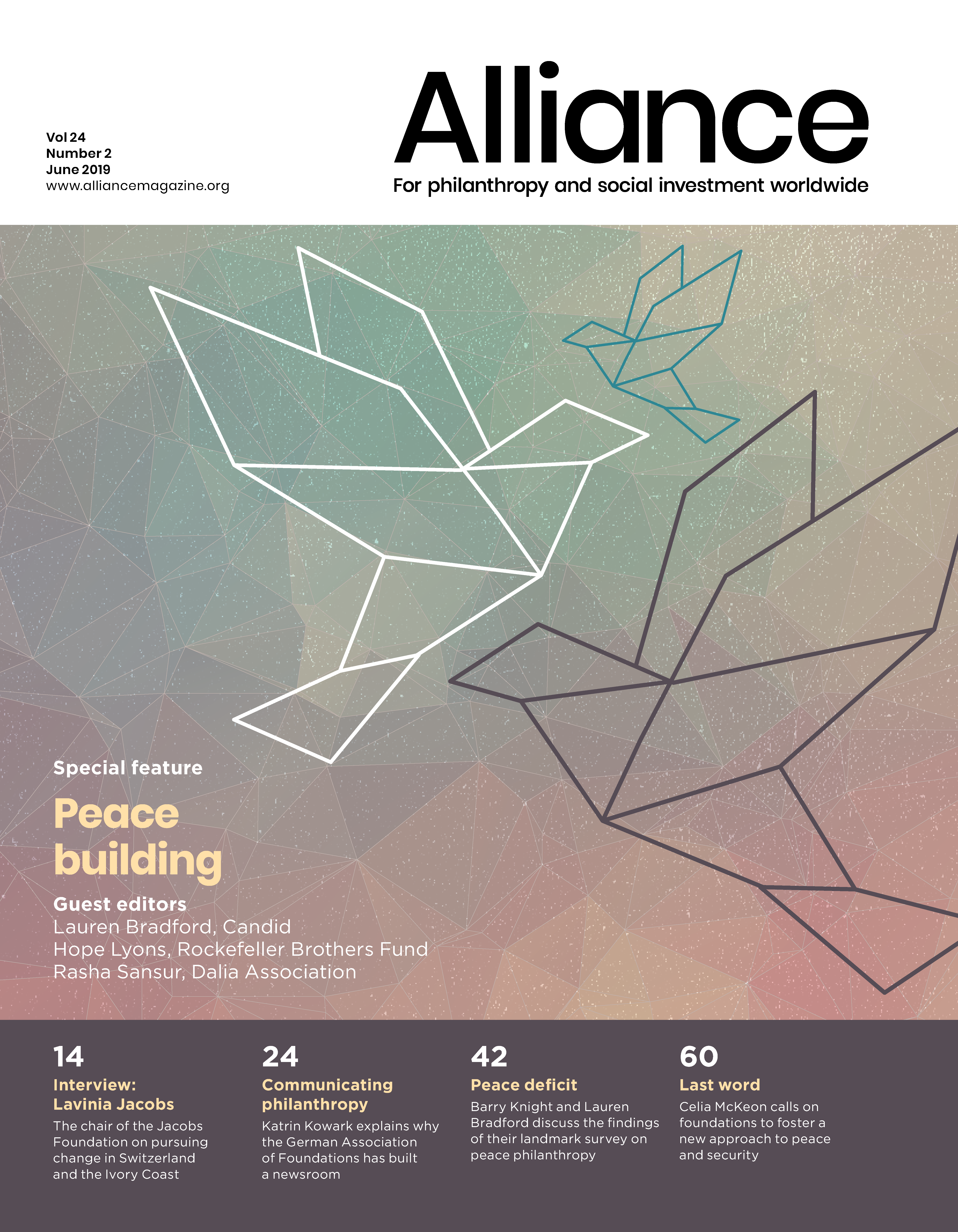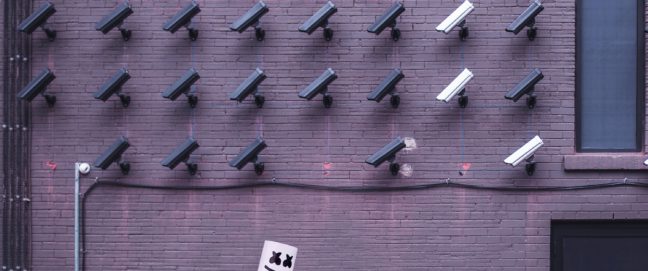Above: a truth telling bonfire in Sierra Leone, where conflict victims and offenders come together as part of a forgiveness ceremony – an image from the work of Fambul Tok, supported by Catalyst for Peace
(c) Sara Terry for Catalyst for Peace.
In a world where nearly everything from the arts to vaccinations to conservation is being politicised, funders of all sorts can learn lessons from the peace and security field
Since every philanthropic endeavour depends ultimately on peaceful and stable societies, peace and security philanthropy underpins every funder’s aim. The peace and security field includes everything from nuclear disarmament and curbing weapons trafficking to protecting civilians in conflicts and promoting inclusive peace through race and gender equity. It is also expanding as new threats arise – climate change as a driver of conflict, emerging technologies like Artificial Intelligence, and widening societal divisions – and requires funders to balance immediate crises, such as Syria and Yemen, and long-term challenges like nuclear weapons and cyberwarfare.
The question of measuring the impact of supporting work that addresses conflict and injustice is a particularly difficult one. Over the years, funders have learned how to better track and share this.
Managing complexity
In a complex field, there are sensitivities that funders must keep in mind. For example, funders who help facilitate or broker conversations between conflicting groups risk being perceived as influencing the process, potentially undermining its legitimacy. Indeed, foundations themselves have recently been accused of being malicious ‘foreign agents’ in increasingly authoritarian countries. Peace and security funders understand that they must be willing to get out of the spotlight. Sometimes it helps to have the clout of a foundation’s name behind your work; other times it does more harm than good.
First, peace and security funders must play a long game because it often takes time to see the value of their investments.
In addition, the broader philanthropic sector can learn from the ways that peace and security funders manage complexity by supporting grantees beyond money. The Peace and Security Funders Group (PSFG) partnered with UK-based foundation and PSFG member Peace Direct to explain best practices for funding locally. Aside from the due diligence required to transfer funds to conflict-prone countries, funders must take extra care to support the safety and capacity of their grantees. Some helpful strategies include providing core support to bolster grantees’ financial management and cybersecurity, flexible reporting, and funding through donor collaboratives or intermediaries.
Measuring impact
The question of measuring the impact of supporting work that addresses conflict and injustice is a particularly difficult one. Over the years, funders have learned how to better track and share this.
Screenshot from the Kivu Security Tracker, DRC kivusecurity.org
First, peace and security funders must play a long game because it often takes time to see the value of their investments. For example, Catalyst for Peace has invested in just one country – Sierra Leone – for over a decade, leading to robust locally-led peace-building work. Their long-term investment was so successful in establishing a network of trusted peace-builders and community leaders that they were able to help mobilise public health education when Ebola threatened the region. In a sector that loves seeing impact in every grant cycle, it is hard to stay the course like this, but there are various other ways for funders to know they are on the right track.
The William and Flora Hewlett Foundation, a major cybersecurity funder, has developed what Eli Sugarman, the programme officer for the Cyber Initiative, describes as ‘a dashboard of indicators’ which measures things like staffing, funding levels and responses to cyber-related events through media engagement. Combined with analysis based on survey data from grantees and other experts, this gives Hewlett ‘a pretty good sense of how the field overall is doing, and of our grantees’ individual roles within it’.
Another way to see impact is to track progress through smaller benchmarks within a larger strategy. For example, instead of trying to tackle all conflict in the Democratic Republic of the Congo (DRC), a small group of funders supports the Kivu Security Tracker, which maps and shares data about violence in eastern DRC. Such an investment provides data to engage policymakers and inform actors like the United Nations and humanitarian organisations that protect civilians, while also amplifying Congolese voices in a debate that is often dominated by outsiders.
The most recent 2019 Index data shows that funders spent over $328 million on peace and security issues. Compared to the roughly $2.4 billion foundations spend on human rights issues, this relatively small amount goes a long way.
Sometimes success comes through policy change. Supported by grants from the Open Society Policy Center, Legacies of War organised the Lao-American community to petition the US government to clear Vietnam-war era cluster bombs in Laos. Thanks to their work, the US Congress steadily increased US State Department funding to clear unexploded ordnance in Laos to $19 million in 2016. In addition, former US President Barack Obama announced $90 million over three years towards the goal of making Laos safe to walk, work and play.
Finally, another measure of success is the extent to which funders collaborate, leading to cost sharing, better support for grantees, greater visibility of the issues, and more creative approaches. When five large peace and security foundations sought to develop an innovative approach to an old threat – nuclear weapons – they formed N Square which has worked with everyone from PopTech to Hollywood in order to democratise innovations that lessen nuclear threats.
A peace and security lens for philanthropy
At PSFG, one of the ways we support funders in this sector is by tracking foundation funding in the annual Peace and Security Funding Index. The most recent 2019 Index data shows that funders spent over $328 million on peace and security issues. Compared to the roughly $2.4 billion foundations spend on human rights issues, this relatively small amount goes a long way.
Peace and security funding can help build the stability and equity needed to pursue other priorities such as education, healthcare and justice. At PSFG, we believe that even those who do not consider themselves peace and security funders can learn from those who are about managing complexity and measuring impact – and at the same time, participate in the work of building a more peaceful world.
Cath Thompson is programme director of the Peace and Security Funders Group.
Email: cthompson@peaceandsecurity.org
Twitter: @PSFundersGroup







Comments (0)